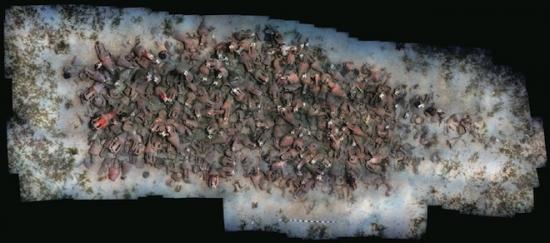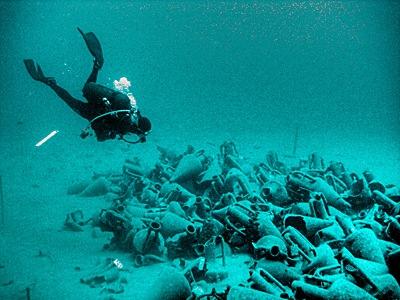Latest underwater excavations on the 2,350-year-old Mazotos shipwreck have established that the keel, and at least 15 metres of the ancient vessel’s planking has been preserved, the Antiquities Department said yesterday.

“This is of prime importance, as it places this wreck among the very few in the Mediterranean that can provide information on shipbuilding during the Classical period,” an announcement said.
It also said that during this year’s excavations archaeologists were also able to shed some new light on trade in antiquity, another important domain of maritime archaeology.
“Together with the Chian wine amphorae, the ship’s main cargo, a secondary type was also transported on the Mazotos ship: wine jugs, which were stowed among the amphorae found in the aft part of the hold. Furthermore, small fine ware pottery was recovered from the stern cabin, which was also partly excavated,” the department said.

It added that the vessels must have belonged to the crew or the passengers. One of them bears two inscribed letters, most probably the initials of someone’s name, it said.
The Mazotos shipwreck, some 14 nautical miles southwest of Larnaca, is possibly the largest ancient commercial shipwreck located in open Cypriot waters. It sank in 350 BC en route from the Greek island of Chios carrying around 1,000 urns filled with wine said to have been the most expensive Greek wine of the Classical period. Today the wreck is buried 45 metres below sea level and is the oldest shipwreck found off the coast of the island to date. The Kyrenia II shipwreck, found 50 years ago, dates back to 300 BC.
Underwater excavations on the wreck began in November 2007 after the ship was discovered by divers a year earlier.
This year’s excavations were conducted by the Archaeological Research Unit of the University of Cyprus, under the direction of Dr Stella Demesticha, in collaboration with the Department of Antiquities of Cyprus and the THETIS Foundation.
All materials recovered were transported to the dedicated lab for underwater finds in the Archaeological Museum of Larnaca, where they will remain for desalination and conservation, both undertaken by the Department of Antiquities.
Fifteen graduate and postgraduate students from the University of Cyprus took part in the project, together with 45 maritime archaeologists and divers from Cyprus and 11 other countries: Greece, Germany, Austria, France, Belgium, Spain, Poland, Croatia, Finland, Australia and USA.